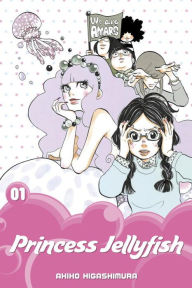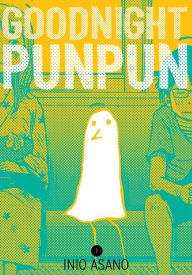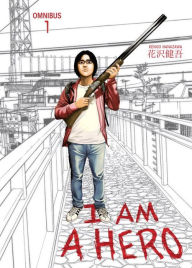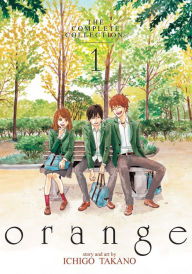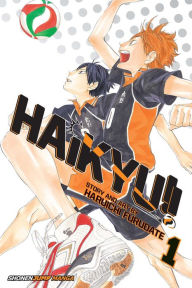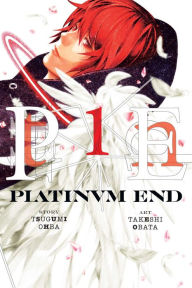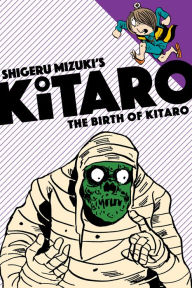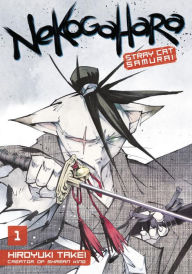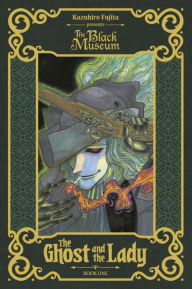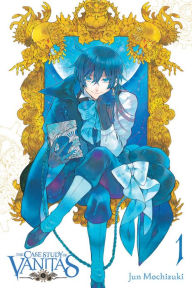The Best New Manga Series of 2016
 Whatever you say about the balance of 2016, it was a good year for manga. Publishers expanded their lines in all different directions, bringing us new titles from popular creators as well as interesting debuts from newcomers. The category has grown richer than ever before, with more manga for more tastes. Here’s a look at 15 of the best series that launched in the past year.
Whatever you say about the balance of 2016, it was a good year for manga. Publishers expanded their lines in all different directions, bringing us new titles from popular creators as well as interesting debuts from newcomers. The category has grown richer than ever before, with more manga for more tastes. Here’s a look at 15 of the best series that launched in the past year.
Princess Jellyfish 1
Princess Jellyfish 1
In Stock Online
Paperback
$15.39
$19.99
Princess Jellyfish, by Akiko Higashimura
The women who live in the Amamizu-kan boardinghouse are fans (otaku) of very specific things: Trains, jellyfish, kimonos, The Records of the Three Kingdoms. They’re happily nerdy together, but they freeze whenever they run up against someone stylish, and members of the opposite sex are out of the question—in fact, they call themselves the “amars” (nuns). So it’s a huge shock to Tsukimi, the jellyfish fanatic, when a stylish girl helps her rescue a jellyfish—and an even bigger shock when the girl turns out to be a boy. Not just any boy, though: Kuranosuke is the younger son of a wealthy, politically connected family, and although he dresses as a woman to dodge any notion that he would go into politics himself, he understands how things work. When a developer announces plans to buy and raze Amamizu-kan, Kuranosuke helps the amars glam up to do battle. Meanwhile, Tsukimi has caught the eye of Kuranosuke’s nerdy older brother, and the attraction is mutual—but he doesn’t realize the beautiful girl he encountered at the jellyfish tank in the aquarium and the dowdy amar in sweats are the same person. Princess Jellyfish puts a uniquely manga spin on some classic rom-com tropes, and the result is a refreshingly funny story about fashion, politics, and extreme nerdiness.
Princess Jellyfish, by Akiko Higashimura
The women who live in the Amamizu-kan boardinghouse are fans (otaku) of very specific things: Trains, jellyfish, kimonos, The Records of the Three Kingdoms. They’re happily nerdy together, but they freeze whenever they run up against someone stylish, and members of the opposite sex are out of the question—in fact, they call themselves the “amars” (nuns). So it’s a huge shock to Tsukimi, the jellyfish fanatic, when a stylish girl helps her rescue a jellyfish—and an even bigger shock when the girl turns out to be a boy. Not just any boy, though: Kuranosuke is the younger son of a wealthy, politically connected family, and although he dresses as a woman to dodge any notion that he would go into politics himself, he understands how things work. When a developer announces plans to buy and raze Amamizu-kan, Kuranosuke helps the amars glam up to do battle. Meanwhile, Tsukimi has caught the eye of Kuranosuke’s nerdy older brother, and the attraction is mutual—but he doesn’t realize the beautiful girl he encountered at the jellyfish tank in the aquarium and the dowdy amar in sweats are the same person. Princess Jellyfish puts a uniquely manga spin on some classic rom-com tropes, and the result is a refreshingly funny story about fashion, politics, and extreme nerdiness.
Goodnight Punpun, Vol. 1
Goodnight Punpun, Vol. 1
By Inio Asano
Paperback $24.99
Goodnight Punpun, by Inio Asano
Asano draws the protagonist of his story, Onodero Punpun, as a cartoon bird, but his story is anything but lighthearted. Quite the contrary: The story opens with Punpun’s father beating his mother badly enough to send her to the hospital; in the aftermath, his uncle moves in to take care of him. The girl he has a crush on is in a cult, his friends are obsessed with porn, and something weird happens while he is sleeping that leaves him really confused. He sees god (in weirdly hallucinatory sequences), but his god doesn’t help him much. Asano isn’t afraid to go dark in this manga (he said he was done with “feel-good” manga after Solanin) but despite the extremes to which he goes, there’s something very universal about Punpun and his freakish world.
Goodnight Punpun, by Inio Asano
Asano draws the protagonist of his story, Onodero Punpun, as a cartoon bird, but his story is anything but lighthearted. Quite the contrary: The story opens with Punpun’s father beating his mother badly enough to send her to the hospital; in the aftermath, his uncle moves in to take care of him. The girl he has a crush on is in a cult, his friends are obsessed with porn, and something weird happens while he is sleeping that leaves him really confused. He sees god (in weirdly hallucinatory sequences), but his god doesn’t help him much. Asano isn’t afraid to go dark in this manga (he said he was done with “feel-good” manga after Solanin) but despite the extremes to which he goes, there’s something very universal about Punpun and his freakish world.
I Am a Hero Omnibus, Volume 1
I Am a Hero Omnibus, Volume 1
Paperback $19.99
I Am a Hero, by Kengo Hanazawa
For his part, Hideo Suzuki makes Punpun look almost normal. At the outset of this zombie-apocalypse manga, Hideo, a troubled manga creator who had one big hit but now toils as an assistant in another creator’s studio, is so busy with hallucinations and freakouts that he doesn’t even notice that his city is slowly being overrun by zombies. It hits home when his girlfriend is bitten and becomes a zombie herself, and he goes on the run, eventually ending up in a “suicide forest” and teaming up with a schoolgirl. He has a gun, and he knows how to use it, but he’s too scared and neurotic to try until things become desperate. I Am a Hero is as grotesque as any zombie story, but the neurotic main character gives it a really different feel.
I Am a Hero, by Kengo Hanazawa
For his part, Hideo Suzuki makes Punpun look almost normal. At the outset of this zombie-apocalypse manga, Hideo, a troubled manga creator who had one big hit but now toils as an assistant in another creator’s studio, is so busy with hallucinations and freakouts that he doesn’t even notice that his city is slowly being overrun by zombies. It hits home when his girlfriend is bitten and becomes a zombie herself, and he goes on the run, eventually ending up in a “suicide forest” and teaming up with a schoolgirl. He has a gun, and he knows how to use it, but he’s too scared and neurotic to try until things become desperate. I Am a Hero is as grotesque as any zombie story, but the neurotic main character gives it a really different feel.
The Gods Lie
The Gods Lie
By Kaori Ozaki
Paperback $12.95
The Gods Lie, by Kaori Ozaki
Two sixth-graders spend the summer together without any grownups around in this bittersweet story, which is complete in one volume. Natsuru Nanao’s single mom is so busy working she doesn’t really notice much—she thinks he’s at soccer camp, but Natsuru ditched it to avoid a bullying coach. Rio Suzumura’a father is off on a fishing trip to Alaska, and when he gets back, they will have plenty of money, but for now, she has to take care of herself and her younger brother. Brought together by a stray kitten, Rio and Natsuru form a makeshift household in her home and pool their resources and their ingenuity. We know it can’t last, though, and the darker side of this story becomes more evident as the summer winds down.
The Gods Lie, by Kaori Ozaki
Two sixth-graders spend the summer together without any grownups around in this bittersweet story, which is complete in one volume. Natsuru Nanao’s single mom is so busy working she doesn’t really notice much—she thinks he’s at soccer camp, but Natsuru ditched it to avoid a bullying coach. Rio Suzumura’a father is off on a fishing trip to Alaska, and when he gets back, they will have plenty of money, but for now, she has to take care of herself and her younger brother. Brought together by a stray kitten, Rio and Natsuru form a makeshift household in her home and pool their resources and their ingenuity. We know it can’t last, though, and the darker side of this story becomes more evident as the summer winds down.
Orange: The Complete Collection 1
Orange: The Complete Collection 1
By
Ichigo Takano
Editor
Jason DeAngelis
In Stock Online
Paperback $19.99
Orange, by Ichigo Takano
Orange is the perfect shoujo manga—sweet, romantic, and funny without relying on the standard cliches. It starts with a letter to high school student Naho from her future self, giving her a very precise set of dos and don’ts. If she doesn’t follow the instructions, the letter cautions, she will regret it later in life. That same day, a new transfer student joins her class, and she and her friends welcome him into their little group. Naho immediately ignores the first instruction, but she doesn’t see the significance until later. As the story goes on, the meaning of these instructions becomes more clear, and a romantic triangle emerges. Naho and her friends act and talk like ordinary teenagers—a refreshing change from the rigid social strata of most shoujo manga—and the story has a few good twists in it, making it a good read for shoujo fans and a good first manga for those new to the genre. Seven Seas has published the entire series in two omnibus volumes.
Orange, by Ichigo Takano
Orange is the perfect shoujo manga—sweet, romantic, and funny without relying on the standard cliches. It starts with a letter to high school student Naho from her future self, giving her a very precise set of dos and don’ts. If she doesn’t follow the instructions, the letter cautions, she will regret it later in life. That same day, a new transfer student joins her class, and she and her friends welcome him into their little group. Naho immediately ignores the first instruction, but she doesn’t see the significance until later. As the story goes on, the meaning of these instructions becomes more clear, and a romantic triangle emerges. Naho and her friends act and talk like ordinary teenagers—a refreshing change from the rigid social strata of most shoujo manga—and the story has a few good twists in it, making it a good read for shoujo fans and a good first manga for those new to the genre. Seven Seas has published the entire series in two omnibus volumes.
Behind the Scenes!!, Vol. 1
Behind the Scenes!!, Vol. 1
By Bisco Hatori
Paperback $9.99
Behind the Scenes, by Bisco Hatori
This short (two-volume) series didn’t get a lot of attention, and it’s too bad. Bisco Hatori, the creator of Ouran High School Host Club, turns to the turbulent life of the Art Squad, the college club that creates costumes, props, and special effects for the four film clubs that are also part of their university. Ranmaru Kurisu is has paused to fix a wobbly park bench when he is interrupted by a woman in a wedding gown pursued by a flock of zombies, who knock him over. A shy country boy who is convinced everything is his fault, Ranmaru immediately apologizes for being in the way and thus ends up being swept up into the Art Squad. When they learn he has a knack for making things, any hope of escape evaporates. This is a great story about a misfit kid finding his niche with a bunch of creative crazy people, and it’s a really fun, if only too brief, read.
Behind the Scenes, by Bisco Hatori
This short (two-volume) series didn’t get a lot of attention, and it’s too bad. Bisco Hatori, the creator of Ouran High School Host Club, turns to the turbulent life of the Art Squad, the college club that creates costumes, props, and special effects for the four film clubs that are also part of their university. Ranmaru Kurisu is has paused to fix a wobbly park bench when he is interrupted by a woman in a wedding gown pursued by a flock of zombies, who knock him over. A shy country boy who is convinced everything is his fault, Ranmaru immediately apologizes for being in the way and thus ends up being swept up into the Art Squad. When they learn he has a knack for making things, any hope of escape evaporates. This is a great story about a misfit kid finding his niche with a bunch of creative crazy people, and it’s a really fun, if only too brief, read.
Complex Age 1
Complex Age 1
By Yui Sakuma
Paperback $12.99
Complex Age, by Yui Sakuma
Nagi is a serious cosplayer. Her best friend Kimiko is a fellow cosplayer and also a cosplay photographer, and together they work out different ideas for photo shoots. But Nagi is 26 years old and still living at home, working at a temp job during the day, and she keeps her hobby a secret because she’s worried about what her parents and co-workers will think. While others seem less concerned, it becomes clear as the story goes on that the outside world takes a harsh view of cosplayers, especially older ones. Complex Age is an inside look at the world of cosplay (with plenty of explanatory notes on the page and in the back of the volumes), but it’s also a story about how different women approach it, how they deal with sexism and ageism both within cosplay circles and in the outside world, and how they handle their own self-doubt. Sakuma perfectly balances the nerdy parts with the human drama, making this a great read for cosplayers and non-cosplayers alike.
Complex Age, by Yui Sakuma
Nagi is a serious cosplayer. Her best friend Kimiko is a fellow cosplayer and also a cosplay photographer, and together they work out different ideas for photo shoots. But Nagi is 26 years old and still living at home, working at a temp job during the day, and she keeps her hobby a secret because she’s worried about what her parents and co-workers will think. While others seem less concerned, it becomes clear as the story goes on that the outside world takes a harsh view of cosplayers, especially older ones. Complex Age is an inside look at the world of cosplay (with plenty of explanatory notes on the page and in the back of the volumes), but it’s also a story about how different women approach it, how they deal with sexism and ageism both within cosplay circles and in the outside world, and how they handle their own self-doubt. Sakuma perfectly balances the nerdy parts with the human drama, making this a great read for cosplayers and non-cosplayers alike.
Haikyu!!, Vol. 1
Haikyu!!, Vol. 1
In Stock Online
Paperback $9.99
Haikyu!! by Haruichi Furudate
Haikyu!! combines the best parts of a good shonen manga and a good sports manga: It takes a basic plotline, little guy battling the odds, and does it well. Shoyo Hinata is determined to become a top volleyball player despite his short stature and lack of experience. He gets to play just one game in middle school, and there he comes up against a real ace, Tobio Kageyama. They take an immediate dislike to each other, so of course they end up on the same team in high school. Haikyu!! isn’t a one-note manga, though. Furudate creates a rich cast of characters with conflicts of their own, so the story never gets stale. At the same time, his love of the game of volleyball shines through, and he gradually brings the reader deeper into the game, introducing the rules and strategies a little at a time until you really can visualize what’s happening on the court at a deeper level.
Haikyu!! by Haruichi Furudate
Haikyu!! combines the best parts of a good shonen manga and a good sports manga: It takes a basic plotline, little guy battling the odds, and does it well. Shoyo Hinata is determined to become a top volleyball player despite his short stature and lack of experience. He gets to play just one game in middle school, and there he comes up against a real ace, Tobio Kageyama. They take an immediate dislike to each other, so of course they end up on the same team in high school. Haikyu!! isn’t a one-note manga, though. Furudate creates a rich cast of characters with conflicts of their own, so the story never gets stale. At the same time, his love of the game of volleyball shines through, and he gradually brings the reader deeper into the game, introducing the rules and strategies a little at a time until you really can visualize what’s happening on the court at a deeper level.
Nichijou, 1
Nichijou, 1
In Stock Online
Paperback
$8.43
$10.95
Nichijou: My Ordinary Life, by Keiichi Arawi
Nichijou is an absurdist take on the cute-schoolgirl gag manga genre. The lead characters are a quartet of girls: Yuuko is cheerful and kind of goofy, Mio is “normal” (whatever that means), Mai wears glasses and is quiet and standoffish, and Nano is a robot who doesn’t want anyone to know she is a robot, although the big windup key sticking out of her back is a dead giveaway. The principal is fond of bad puns and the guidance counselor is insane. That setup is not so far off from Azumanga Daioh or GA Geijutsuka Art Design Class, but Nichijou is much weirder. Students pull weapons and blast away at each other, with little permanent effect; a deer appears out of nowhere and battles with the principal; a wooden Boddhisatva statue keeps appearing in different contexts. Even the standard setups, such as planning for the school festival, rushing off late to school and colliding with a fellow student, or one character thinking the other is ignoring her when she’s really just wearing headphones, go off in unexpected directions. The art is cute and straightforward, and the stories are short, so it’s easy to read in small bites.
Nichijou: My Ordinary Life, by Keiichi Arawi
Nichijou is an absurdist take on the cute-schoolgirl gag manga genre. The lead characters are a quartet of girls: Yuuko is cheerful and kind of goofy, Mio is “normal” (whatever that means), Mai wears glasses and is quiet and standoffish, and Nano is a robot who doesn’t want anyone to know she is a robot, although the big windup key sticking out of her back is a dead giveaway. The principal is fond of bad puns and the guidance counselor is insane. That setup is not so far off from Azumanga Daioh or GA Geijutsuka Art Design Class, but Nichijou is much weirder. Students pull weapons and blast away at each other, with little permanent effect; a deer appears out of nowhere and battles with the principal; a wooden Boddhisatva statue keeps appearing in different contexts. Even the standard setups, such as planning for the school festival, rushing off late to school and colliding with a fellow student, or one character thinking the other is ignoring her when she’s really just wearing headphones, go off in unexpected directions. The art is cute and straightforward, and the stories are short, so it’s easy to read in small bites.
Platinum End, Vol. 1
Platinum End, Vol. 1
By
Tsugumi Ohba
Illustrator
Takeshi Obata
Paperback $9.99
Platinum End, by Tsugumi Ohba and Takeshi Obata
The creators of Death Note use some of the same themes in Platinum End: It’s the story of a teenager who is given powerful—but limited—abilities as part of a game of the gods. This time, thought, the teenager is underprivileged, not overprivileged, and the visitor is an angel, not a demon. Still, the powers she bestows on Mirai, the lead character, have a sinister side. As the story begins, Mirai is about to jump off the top of a building. In fact, he does jump, but a scantily clad angel rescues him. She gives him wings that can carry him anywhere at incredible speed and arrows that will cause anyone to fall in love with him for 33 days. It’s all part of a complicated scheme to choose a God from a pool of 13 humans, each of whom is accompanied by their own angel. The winner will become the next God, with all the goodies that entails; the downside is that one of the other candidates has decided the best way to win this competition is by killing all the others. This is a more “adult” book than Death Note, with gorier violence and more sex, and the backstory is pretty complex. Obata’s art is as clear and lovely as ever, and if Mirai looks like all his lead characters, there is more variety in the supporting cast.
Platinum End, by Tsugumi Ohba and Takeshi Obata
The creators of Death Note use some of the same themes in Platinum End: It’s the story of a teenager who is given powerful—but limited—abilities as part of a game of the gods. This time, thought, the teenager is underprivileged, not overprivileged, and the visitor is an angel, not a demon. Still, the powers she bestows on Mirai, the lead character, have a sinister side. As the story begins, Mirai is about to jump off the top of a building. In fact, he does jump, but a scantily clad angel rescues him. She gives him wings that can carry him anywhere at incredible speed and arrows that will cause anyone to fall in love with him for 33 days. It’s all part of a complicated scheme to choose a God from a pool of 13 humans, each of whom is accompanied by their own angel. The winner will become the next God, with all the goodies that entails; the downside is that one of the other candidates has decided the best way to win this competition is by killing all the others. This is a more “adult” book than Death Note, with gorier violence and more sex, and the backstory is pretty complex. Obata’s art is as clear and lovely as ever, and if Mirai looks like all his lead characters, there is more variety in the supporting cast.
The Birth of Kitaro
The Birth of Kitaro
By
Shigeru Mizuki
Translator
Zack Davisson
Paperback $12.95
The Birth of Kitaro, by Shigeru Mizuki
This is just the first of a series of books about the yokai boy Kitaro that Drawn and Quarterly is publishing in a compact format with an eye toward drawing in younger readers. The first story in this volume may be a bit scary for the tykes: It’s Kitaro’s origin story, and it also explains why his father accompanies him everywhere in the form of a sentient eyeball with legs. The other stories are more like folk tales than horror stories. Yokai (spirits) are based on Japanese folk tales but literally take on a life of their own in Mizuki’s work. These small volumes collect short stories from Mizuki’s heyday in the 1960s, and they stand well on their own but also make good companion volumes for Drawn and Quarterly’s larger collections, Kitaro and NonNonBa
The Birth of Kitaro, by Shigeru Mizuki
This is just the first of a series of books about the yokai boy Kitaro that Drawn and Quarterly is publishing in a compact format with an eye toward drawing in younger readers. The first story in this volume may be a bit scary for the tykes: It’s Kitaro’s origin story, and it also explains why his father accompanies him everywhere in the form of a sentient eyeball with legs. The other stories are more like folk tales than horror stories. Yokai (spirits) are based on Japanese folk tales but literally take on a life of their own in Mizuki’s work. These small volumes collect short stories from Mizuki’s heyday in the 1960s, and they stand well on their own but also make good companion volumes for Drawn and Quarterly’s larger collections, Kitaro and NonNonBa
Wandering Island
Wandering Island
Paperback
$10.29
$14.99
Wandering Island, by Kenji Tsuruta
Wandering Island should make every best-manga-of-the-year list based on its art alone. The story is set on an island off the coast of Japan, where Mikura Amelia works as a pilot for a delivery service, flying around in her seaplane accompanied by her cat. After her grandfather dies, she learns about a strange island that may or may not exist, but if it does, moves from place to place. Mikura is a skilled navigator, and she covers her wall with charts to try and pinpoint where the island could be, but there’s more to the mystery than just its location. Tsuruta fills the story with beautiful drawings of Mikura, her traditional house, the island, planes, cats, and other wonderful things. The bad news is that he’s taking his time about it, so this first volume is the only one out so far, and it may be a while before we find out the answer to the mystery of the wandering island
Wandering Island, by Kenji Tsuruta
Wandering Island should make every best-manga-of-the-year list based on its art alone. The story is set on an island off the coast of Japan, where Mikura Amelia works as a pilot for a delivery service, flying around in her seaplane accompanied by her cat. After her grandfather dies, she learns about a strange island that may or may not exist, but if it does, moves from place to place. Mikura is a skilled navigator, and she covers her wall with charts to try and pinpoint where the island could be, but there’s more to the mystery than just its location. Tsuruta fills the story with beautiful drawings of Mikura, her traditional house, the island, planes, cats, and other wonderful things. The bad news is that he’s taking his time about it, so this first volume is the only one out so far, and it may be a while before we find out the answer to the mystery of the wandering island
Nekogahara: Stray Cat Samurai 1
Nekogahara: Stray Cat Samurai 1
Paperback $12.99
Nekogahara: Stray Cat Samurai, by Hiroyuki Takei
Nekogahara is a high-concept book, and the concept is right there in the title: Stray Cat Samurai. The simplest description is that it’s a samurai manga with cats instead of people, but of course there’s more to it than that. A wandering samurai comes to town, yes, and he defeats the cruel landlord who is crushing the peasants with high taxes, and he has a mysterious and probably sad backstory. All that is standard samurai stuff. Nekogahara also takes on the tension between freedom and security, casting it as a conflict between kept and stray cats, and weaves cat references such as catnip into the story in very natural ways. It’s a refreshing take on the samurai genre, with plenty of swordplay and beautifully drawn, incredibly varied, feline characters.
Nekogahara: Stray Cat Samurai, by Hiroyuki Takei
Nekogahara is a high-concept book, and the concept is right there in the title: Stray Cat Samurai. The simplest description is that it’s a samurai manga with cats instead of people, but of course there’s more to it than that. A wandering samurai comes to town, yes, and he defeats the cruel landlord who is crushing the peasants with high taxes, and he has a mysterious and probably sad backstory. All that is standard samurai stuff. Nekogahara also takes on the tension between freedom and security, casting it as a conflict between kept and stray cats, and weaves cat references such as catnip into the story in very natural ways. It’s a refreshing take on the samurai genre, with plenty of swordplay and beautifully drawn, incredibly varied, feline characters.
The Ghost and the Lady 1
The Ghost and the Lady 1
Hardcover $19.99
The Ghost and the Lady, by Kazuhiro Fujita
This is the manga for readers who like a good period ghost story, especially one that mashes up unlikely characters. The framing tale is a visit to Scotland Yard’s “Black Museum,” a members-only museum of crime artifacts. There, a professor finds two bullets that hit each other head-on and fused together, and from there we move on to a ghost who is spending his eternity in the theater—until a visit from Florence Nightingale upsets his tranquil existence. The story is intriguing, the art is unusual and very expressive, and the presentation is beautiful, in a hardcover volume with gilt trim that looks like it could have been produced in the Victorian era itself.
The Ghost and the Lady, by Kazuhiro Fujita
This is the manga for readers who like a good period ghost story, especially one that mashes up unlikely characters. The framing tale is a visit to Scotland Yard’s “Black Museum,” a members-only museum of crime artifacts. There, a professor finds two bullets that hit each other head-on and fused together, and from there we move on to a ghost who is spending his eternity in the theater—until a visit from Florence Nightingale upsets his tranquil existence. The story is intriguing, the art is unusual and very expressive, and the presentation is beautiful, in a hardcover volume with gilt trim that looks like it could have been produced in the Victorian era itself.
The Case Study of Vanitas, Vol. 1
The Case Study of Vanitas, Vol. 1
In Stock Online
Paperback $13.00
The Case Study of Vanitas, by Jun Mochizuki
Jun Mochizuki, creator of Pandora Hearts, pulls out all the stops in this action-packed vampire story set in a steampunk version of 19th century Paris. The vampires of Paris have gone underground, and they no longer attack humans, but that peace may be fracturing: A series of recent murders is suspected to be the work of a rogue vampire. Noé, a vampire from a small village, is traveling to the city in a giant, ornate airship to seek out the mysterious Book of Vanitas, a clockwork grimoire (spell book) that has the ability to take—or give back—a vampire’s true name, the essence of his or her being. Noé is shocked to learn that the current possessor of the book is a human, Vanitas, who claims to be using the book to heal vampires who have lost their true names and fallen into the clutches of evil. Together they head out to find the murderous vampire and use the book to remove his curse, hoping thereby to convince Count Parks Orlov, the supervisor of the Paris vampires, of the book’s power (and a lovely woman’s innocence). Mochizuki’s art is stunning, especially when she lets loose with the cogs and the clockwork, and she leavens the story with just enough slapstick humor to keep it from getting too deadly serious.
What is your favorite manga series that debuted in 2016?
The Case Study of Vanitas, by Jun Mochizuki
Jun Mochizuki, creator of Pandora Hearts, pulls out all the stops in this action-packed vampire story set in a steampunk version of 19th century Paris. The vampires of Paris have gone underground, and they no longer attack humans, but that peace may be fracturing: A series of recent murders is suspected to be the work of a rogue vampire. Noé, a vampire from a small village, is traveling to the city in a giant, ornate airship to seek out the mysterious Book of Vanitas, a clockwork grimoire (spell book) that has the ability to take—or give back—a vampire’s true name, the essence of his or her being. Noé is shocked to learn that the current possessor of the book is a human, Vanitas, who claims to be using the book to heal vampires who have lost their true names and fallen into the clutches of evil. Together they head out to find the murderous vampire and use the book to remove his curse, hoping thereby to convince Count Parks Orlov, the supervisor of the Paris vampires, of the book’s power (and a lovely woman’s innocence). Mochizuki’s art is stunning, especially when she lets loose with the cogs and the clockwork, and she leavens the story with just enough slapstick humor to keep it from getting too deadly serious.
What is your favorite manga series that debuted in 2016?
